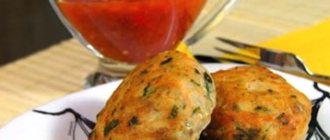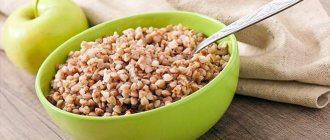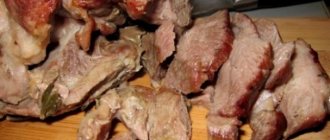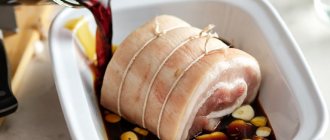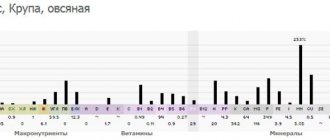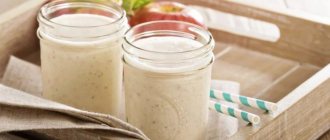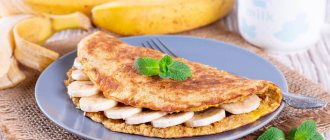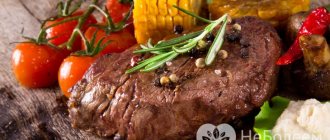- July 25, 2018
- Diets
- Rosalia Rison
Everywhere there are recipes in which you can definitely find chicken: chicken soups, salads, casseroles. This is an incredibly popular meat; it is sold out the fastest in hypermarkets, supermarkets and regular stores. But have you ever wondered why most people choose chicken? Today we will figure out together why chicken is so beneficial and under what circumstances it can harm our body. Let’s also decide: how much is 100 grams of boiled chicken?
Popular product
As we have already noted, chicken is the most desired and preferred meat on holiday tables. Therefore, while in stores on New Year, Christmas, and March 8, you can often notice chicken in customers’ carts. No wonder she's so popular. The many cooking methods certainly speak for themselves. Chicken can be baked, boiled, and fried. It is also cut into salads and made into minced meat. There are very, very many variations.
Calorie content and recipes for popular dishes with chicken
There are more than 500 recipes
tasty, satisfying, but easy to prepare dishes involving fillet.
Every traditional cuisine in the world can boast of such a dish. For example, in Japan it is teriyaki and oyakodon
, in India it is chicken curry, in China it is stir-fry.
Even American nuggets
can be prepared without compromising your figure if you replace the bread crumbs with.
Caesar with chicken
Cut the bread into cubes, place on a baking sheet and dry in the oven. Add vegetable oil to the pan, squeeze out the garlic and fry the croutons in the garlic extract. Fry chicken fillet, rubbed with salt, cool and cut. Soak the salad in cold water for an hour, then tear it up. Cut the cheese into layers. Cut the tomatoes into 4 parts. Place all ingredients in one plate and shake slightly to combine.
Place the egg in boiling water for 1 minute and immediately cool in cold water. Break the eggs into a bowl, add mustard, lemon juice and beat, adding olive oil and sauce, salt and pepper.
Serve the sauce separately from the salad.
Calorie content – 232.85 kcal / 100 g.
Light chicken noodle soup
- 250 g chicken fillet;
- 100 g noodles;
- 3 l. water;
- salt, pepper, herbs to taste.
Fill the pan with water and put on fire. Place carrots, peeled onions, and chopped fillets in water. Bring to a boil, reduce heat and add chopped potatoes and bay leaves. Cover with a lid and cook for about 20 minutes. Add noodles, salt, pepper, break the egg and pour into the pan. Cook until the noodles are ready. Turn off and sprinkle with herbs.
The energy value of chicken and noodle soup is 77.90 kcal / 100 g.
Pilaf with chicken
- 250 g chicken fillet;
- 250 g;
- carrot;
- bulb;
- , salt, pepper to taste.
Grate the carrots, chop the onion finely, cut the chicken fillet into cubes. Pour oil into a deep saucepan so that it covers the bottom. Add onions, carrots and let soften. Add the chicken and stir for 3 minutes until the meat is white on all sides. Pour 2 tbsp. water, salt and pepper. Add rice, reduce heat and wait until the water evaporates. Sprinkle with cumin, cover with a lid, turn off the heat and let the rice soak.
Calorie content of pilaf with chicken – 155.94 kcal / 100 g.
Julienne with chicken and mushrooms
- 250 g chicken fillet;
- 200 g;
- 1 onion;
- 100 g sour cream;
- 100 g;
- salt pepper.
Finely chop the chicken, mushrooms and onions and mix. Make cocotte bowls from foil. Place the chicken mixture, place the onion on top, brush with sour cream and add grated cheese. Place in the oven at 180 degrees for an hour.
Calorie content – 140 kcal / 100 g.
Chicken kebab and its calorie content
- 700 g chicken thighs without skin;
- 1 l;
- salt pepper.
Place the thighs in a bowl, pour in kefir and stir. Add spices and mix again. Place in the refrigerator overnight or for 3 hours. Kefir has the property of softening meat. Grill shish kebab on skewers or skewers.
Calorie content of chicken kebab – 225.47 kcal / 100 g.
Japanese chicken
- 500 g chicken breasts;
- 1 tbsp. l. ;
- salt and pepper;
Beat the chicken fillet, cut into strips and fry over high heat in vegetable oil. Add honey to soy sauce, stir, pour over chicken, salt, pepper and stir. Cover with a lid and simmer for about 5 minutes.
The energy value of Japanese chicken breasts is 107 kcal / 100 g.
Chicken oyakodon recipe
- 300 g chicken fillet;
- 1 onion;
- 1 bunch of green onions;
- soy sauce;
- 2 eggs.
Lightly pound the chicken and cut into strips. Chop the onion. Heat soy sauce in a frying pan, add onion and chicken. Simmer for about 20 minutes. Beat the eggs and pour over the chicken. Cover with a lid and simmer for about 3 minutes. Sprinkle the finished portions with chopped green onions. There is no need to add salt - soy sauce is already salty.
Chicken breast calories:
130 kcal.* * average value per 100 grams, depends on the cooking method
The breast is the most valuable part of a chicken carcass. This is a universal dietary product, dishes from which are included in the therapeutic diet. Due to its low fat content and therefore low energy value, breast fillet is allowed in many diets.
The benefits of chicken
Of course, it's first worth mentioning that chicken is rich in protein. That is why it is used so much by athletes who want to build muscle. 100 grams of chicken contains 23 g of protein.
This is one of the main dishes in the diet of those losing weight, since chicken contains almost no fat. It is best to eat breast meat. 100 grams of chicken – 2 grams of fat.
It has very little cholesterol, so chicken is especially useful for those who suffer from vascular diseases.
For those who suffer from joint problems, remember: chicken contains all the amino acids a person needs and many vitamins, for example, A, B, B6, E and others. Vitamins help normalize the functioning of the nervous system and stimulate the activity of the heart.
There are almost no carbohydrates in meat: there are only 0.4 g of them in 100 grams of chicken. Chicken is easily absorbed by the body.
How to cook chicken breast?
Chicken meat can be prepared in the following ways:
- bake in the oven;
- fry;
- cook;
- stew;
- steam it.
Fried fillet
The least healthy and the most high-calorie, however, it is the easiest to prepare. Some people beat the breast before frying, others do not. Fry the meat for 4 minutes on both sides; season and add salt if desired.
But it will take longer to cook or stew the breast. Boiled chicken is eaten raw extremely rarely; it is mainly used as a component for salads.
Recipes
Some people do not like chicken fillet and consider it tasteless, but the taste of this product depends on how it is prepared. For example, you can prepare a tasty and nutritious dish based on fillet in sour cream
. To do this, prepare:
- 300 grams of chicken fillet without skin;
- 100 grams of sour cream, optional low-fat;
- one onion;
- spices and salt to taste.
Wash the meat and remove any skin if there was any in the first place. Then remove excess fat and cook. You need to cook for about 15 minutes, no longer, so that the meat is not overcooked and is not tough. Fry the onion in olive oil until golden brown.
Cut the boiled breast into pieces and place in a saucepan, add onion, sour cream and spices, mix everything well. Add water and simmer over low heat. When almost all the water has boiled away, the chicken will be ready. It can be served with a side dish of fresh or steamed vegetables.
This dish is delicious and contains 70 grams of protein.
, which is the daily requirement for an adult.
If you want to cook chicken roast, then boil the breasts for 30 minutes, then cut and stew along with vegetables.
At the end you can add a sauce based on the following ingredients:
- garlic;
- cream;
- walnuts;
- greenery.
The roast cooks in just 40 minutes.
If you want to cook delicious chicken fillet in the oven, it is recommended to pre -marinate it for 2 hours
. For this, you can use sauces and dressings that contain a minimum of carbohydrates, which, accordingly, will prevent you from gaining extra pounds.
As you can see, chicken breast is a rich source of protein, as well as a tasty, healthy and low-calorie dish from which you can prepare a huge number of tasty and healthy dishes.
From which you can prepare many dishes. It contains very little fat compared to legs, wings and other edible parts of poultry, while having almost the same taste. For those who are on a diet or want to enrich their diet with additional animal protein, chicken breast is best suited. Steamed or grilled or baked with vegetables, it will be an excellent second course for lunch or serve as a full dinner. You will learn about how much protein is in chicken breast, as well as about the energy content and the product mentioned in our article. By eating this meat, you will get enough nutrients with a minimum of fat. Isn't this what you need?
The nutritional value
Chicken breast is only 110 kcal per 100 grams of product, while you get only 11 kcal from fat (that’s about 1.2 g of fat per 100 g of meat), and it contains as much as 23 grams of protein! Considering that the body requires about 80 g of this valuable nutritional element per day, it can be calculated that 300 grams of the product in question (without skin and bones) will help you provide it. Knowing how much protein is in chicken breast, athletes and people who need a diet with a high protein content or are on an appropriate diet can calculate the required amount of consumption of this meat per day.
Cooking delicious chicken breast
Eating it every day is quite boring, so sometimes you can diversify your menu and cook it without having to fry the meat. The dish is prepared in two stages: first, the breast is boiled, and then poured with sour cream sauce and stewed. To prepare you will need:
- whole bone-in breast or fillet (approximately 300 g);
- 100 ml sour cream 10% fat;
- 1 small onion;
- spices - salt, bay leaf, black pepper (to taste).
First you need to boil the meat. To do this, put it in cold, slightly salted water, put it on the stove and cook for 15 - 20 minutes. Do not overcook - otherwise the breast will turn out dry and tough. Then we cut it into small pieces, put it in a separate pan, pour in sour cream, add pre-chopped and fried onion until light golden brown, season everything with spices - salt, black pepper and bay leaf - and mix. Then add water (it should cover the food by about 2/3) and simmer for 15 minutes on medium heat. When most of the liquid has evaporated, the dish is ready. It can be eaten separately, or even better, served with a side dish of steamed vegetables, or with a light vegetable salad. Having information about how much protein is in a chicken breast, it is easy to calculate that this dish will provide you with approximately 70 grams of the valuable substance, that is, almost the daily requirement. It's so simple, tasty and healthy.
Festive chicken breast salad
With all the variety of recipes for preparing dishes from this nutritious meat, it is worth paying special attention to salad. Its preparation is simple and easy, and the taste is so excellent that it is not a shame to serve it at the holiday table. Prepare:
- 500 g of boiled fillet (read about how to cook meat in the previous recipe);
- 50 g peeled walnuts;
- 1 small clove of garlic;
- sour cream for dressing;
- spices - salt and pepper.
The process will not take even 10 minutes - cut the boiled breast into small pieces or split it into thinner fibers. Grind the nuts in a coffee grinder or using a knife. Add to meat. Pass the garlic through a press and add it to the salad, then pour sour cream over the whole mass. Stir, salt and pepper to taste. The salad can be decorated with herbs - chopped dill, green onions or parsley. Knowing how much protein is in chicken breast (approximately 23 g per 100 g of finished product), let's calculate the nutritional value of the dish here. Based on the fact that one serving of salad is approximately 150 g, then by eating it with pleasure, you get 34.5 g of pure protein. Be sure to use these (or others similar to ours) recipes to please your family and friends with not only tasty, but also extremely nutritious dishes.
Now you know how many benefits chicken breast can give you and your family. So much protein! And an almost complete absence of calories (compared to other types of meat) plus a pleasant variety. This should definitely be taken into account by those who care about a healthy diet for the whole family.
Chicken meat is a popular food all over the world. It is believed that chickens were first domesticated in India thousands of years ago, primarily for cockfighting and later for meat consumption. In addition, this meat is part of various culinary traditions, starting with chicken curry and teriyaki
ending with
Buffalo wings and barbecue
.
Chicken is known for being rich in proteins, nutrients that are very important for the development and maintenance of body functions. Chicken meat is also rich in other nutrients such as vitamins, minerals and fat.
Chicken harm
Many people refuse chicken precisely because it is loaded with preservatives and antibiotics. They negatively affect the body, as they cause a number of diseases. There are incredibly few nutrients left in the composition. Like any other product, chicken meat can cause allergic reactions. This is mainly due to the cooking method.
- Remember that smoked and fried chicken can contain a lot of cholesterol, which can clog blood vessels.
- If meat is not thoroughly cooked, there is a risk of becoming infected with bacteria that are dangerous to the human body.
- Avoid skins; if possible, remove them before cooking. This is a very fatty part of the meat, which means it contains a lot of cholesterol.
Fried, boiled, baked chicken
When preparing dishes, you should take into account differences in cholesterol and fat levels in different parts of the bird. The choice of product processing method must also be approached responsibly. You can eat boiled tender meat without worrying about your figure; the calorie content of chicken in this case does not exceed 140 kcal when using lean parts. Otherwise, the indicator will increase to 200 kcal.
If you follow a healthy diet or are trying to lose weight, you can bake or stew chicken fillet (up to 100 kcal).
Interestingly, the calorie content of grilled skinless chicken is only 126 kcal. This is due to the fact that most of the fat is rendered over the fire. The calorie content of fried chicken is about 210 kcal, which is quite low compared to other types of meat, such as pork. It is worth noting that when skin is removed, the value decreases. You can compare the nutritional composition (BJU) of raw, boiled and fried chicken breast.
Calorie content of meat
So, let's find out how many calories are in chicken. Calorie content per 100 grams is only 95 kcal. But if you boil the breast with the skin, it will contain about 165 kcal.
Below is the calorie content of chicken per 100 grams:
- Boiled thighs contain 161 kcal, with skin - 186 kcal.
- In the lower leg there are 110 kcal, with the skin - 160 kcal.
- Boiled wings – 180 kcal.
- In skinless legs - 171 kcal.
- Boiled chicken (100 grams) without skin – 170 kcal.
How many calories are in chicken
The most dietary part of a poultry carcass is fillet, with a calorie content of about 110 kcal. It contains no carbohydrates, minimal fat content and a lot of protein. Fillet can be included in the diet for various diets, including the most strict. You can learn more about it and its benefits for weight loss from the article.
In terms of energy value, chicken can be compared with seafood or freshwater fish.
Due to the low fat content, the body is quickly satisfied with this meat, and there are no problems or discomfort when digesting the product. Not all parts of a carcass have the same nutritional value. The calorie content of chicken thighs and wings exceeds that of the breast - 185 and 186 kcal, respectively. It is not recommended to overuse chicken skin during a diet. Despite the excellent taste that this part acquires when baked, its calorie content exceeds 212 kcal per 100 g.
How to choose a chicken
Not everyone knows how to choose the right chicken. But if you don’t want to eat low-quality dishes or, even worse, end up poisoning your dinner, then the following tips will help you with choosing a product:
- When purchasing, pay attention to what the chicken looks like. You need to choose one whose limbs are more or less proportional to the body. Otherwise, it grew thanks to harmful substances that were injected into the carcass.
- You can touch it: the right chickens have a springy, non-rigid breast.
- The chicken cannot have visible defects: fractures, scratches, etc.
- The color of the carcass should be pale pink. If there is a dark yellow bird in front of you, then it is an adult chicken. It's better to take a young one.
- Try applying light pressure to the bird. If a dent remains, then it is better not to take this carcass. A proper chicken should immediately return to its previous shape.
- Of course, it's worth smelling the meat. After all, it is by smell that we usually determine the freshness of all products, even if we do not know how to choose them correctly.
- Chicken is not fresh if its skin is sticky. This is a sign that hormones were injected into her. The skin should be dry and non-slip.
- It is best to buy chilled meat, not frozen, as after defrosting the chicken will be very tough. The only situation where you can use frozen meat is if you need to stock up on food for a week or a month.
- We study the packaging: it must have a mark of inspection by the State Veterinary Supervision Authority and the presence of GOST. Moreover, it must indicate the shelf life and the name of the poultry farm.
- Choose chicken in transparent packaging so you can see it all. You shouldn't have any surprises at home. It is preferable to take packages without damage.
- If you are going to make soup, choose an older chicken to ensure a rich broth. It is best, of course, to take poultry.
- For all other recipes where chicken is fried, stewed or baked, you need to take a carcass that weighs just over a kilogram.
Chicken dishes are healthy foods that provide the body with many nutrients and energy. Try reviewing your diet and adding more chicken to it.
We hope you find these tips helpful. Choose your product carefully, not forgetting our recommendations, to truly enjoy your chicken dish.
How to measure 100 grams
How much does 1 chicken breast fillet weigh?
how to choose chicken meat? do you need in fried chicken breast
- - tea spoon;
- - a tablespoon.
Instructions
Wheat flour - 25 g, 10 g
Ground cloves - 3 g
Black peppercorns - 5 g
1 g is 12 pieces of cloves, 7 pieces of bay leaf, 30 pieces of hot pepper, 15 pieces of allspice. With this data at hand, it is easy to measure the required amount of food and prepare the dish according to the chosen recipe.
You can measure 100 grams of cereal or granulated sugar using a ruler. Take a blank sheet of paper. Draw a rectangle on it with sides 20*10 cm. On each side equal to 20 cm, measure 2 cm. Connect the resulting points. The result is a rectangle 10*2 cm. Pour 1 kg of cereal or sugar onto this sheet. Use a ruler to trim the product so that it fills the large rectangle but does not protrude beyond its edges. Cereals or sugar should lie in an even layer. Holding the edge of a ruler or knife perpendicular to the table, separate the portion of the product that is in a small rectangle. It will be 100 grams.
Helpful advice
When measuring food with a spoon, you should scoop it up so that you get a slide.
- 100 grams of flour is how many tablespoons
- How many grams do foods weigh in a tablespoon?
Chicken breast boiled, fried, baked
The method of preparing food largely determines the energy value of the finished dish. Those who adhere to a healthy diet should boil skinless and boneless chicken breast. In this case, its calorie content reaches 137 kcal; such meat goes well with both cereals and vegetables.
Steamed breast has a minimum calorie content of 113 kcal.
It is not recommended to fry fillet, because chicken often turns out to be dry, and the energy value of the prepared dish increases sharply (~ 158 kcal). The calorie content of fried breast depends on the amount of vegetable oil used during cooking. It is recommended to grill the fillet; it contains fewer calories (~ 150 kcal).
A dietary option for preparing chicken is baking it in the oven. The meat can be marinated in spices and seasonings, add soy sauce and orange juice. Thanks to this, it will be soft and juicy, and the finished dish will become the main component of dinner. But it should be noted that additional ingredients increase the nutritional value of cooked meat.
Chicken fillet - use in diets
Chicken fillet is one of the lowest calorie meats. However, it contains a huge amount of vitamins and minerals, which is important for those who are on a diet and constantly limit themselves. The most beneficial for a healthy diet is skinless chicken breast, steamed or boiled. Read about it in our publication.
By selecting different ingredients with which to cook meat, you can create real culinary masterpieces every day. And monitoring the nutritional value of ready-made meals will allow you to gradually say goodbye to extra pounds.
Nutritional value of chicken breast
White chicken fillet meat contains choline, B vitamins, retinol, ascorbic and nicotinic acids, and niacin. These components regulate the functioning of the adrenal glands and gastrointestinal tract, and help cleanse the liver. Minerals are represented by potassium, magnesium, zinc, selenium, copper, iron, phosphorus, sodium. This set normalizes heart function, stimulates immune defense during ARVI epidemics and during rehabilitation after illnesses.
The calorie content of a chicken breast with skin is 135 kcal, without skin - 113.
For the energy value of the daily diet recommended for diets, a serving of cooked fillet will be about 5.5% of the total calories. In addition, 24% of the protein contained in white meat corresponds to only 2% fat, so its regular consumption stimulates the growth of muscle mass without adding fat.
